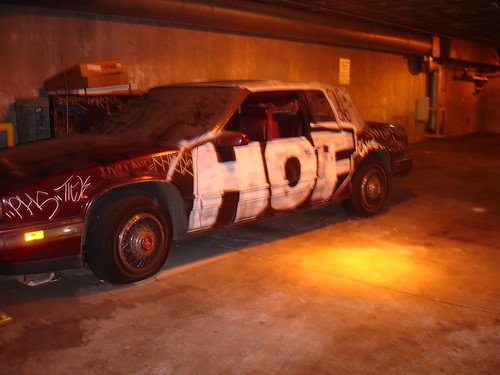New Fuel Efficiency Standard Proposed to Address Climate Change and Energy Security; Proposed new Standard Links Mileage and Gas Emissions
(Source: New York Times)
The Obama administration issued proposed rules on Tuesday that impose the first nationwide limits on greenhouse gas emissions from vehicles and that require American cars and light truck fleet to meet a fuel efficiency standard of 35.5 miles a gallon by 2016.
The government projects that the regulations will raise car and truck prices by an average of $1,100, but that drivers will save $3,000 over the life of the vehicle in lower fuel bills. Officials also said the new program, which is to take effect in 2012, would reduce carbon dioxide emissions by nearly a billion tons and cut oil consumption by 1.8 billion barrels from 2012 to 2016.
The 1,227-page regulation will go through a 60-day public comment period before it is completed early next year.
The program was first announced by President Obama in May as a way to resolve legal and regulatory conflicts among several federal agencies and a group of states, led by California, that wanted to impose stricter mileage and emissions standards than those set by Congress and a succession of presidents.
Automakers had complained that they faced a thicket of rules that were almost impossible to meet. The Obama compromise was endorsed by the major auto companies, state officials and most environmental advocates.
Mr. Obama, speaking to auto workers at a General Motors plant in Lordstown, Ohio, on Tuesday, said the rules were good for manufacturers, workers and consumers.
“For too long,” Mr. Obama said, “our auto companies faced uncertain and conflicting fuel economy standards. That made it difficult for you to plan down the road. That’s why, today, we are launching — for the first time in history — a new national standard aimed at both increasing gas mileage and decreasing greenhouse gas pollution for all new cars and trucks sold in America. This action will give our auto companies some long-overdue clarity, stability and predictability.”
In addition to providing domestic and foreign auto manufacturers with a single national standard, the proposed rule allows them to continue to build and import all classes of vehicles, from the smallest gas-electric hybrids to large sport utility vehicles. The mileage standard varies by vehicle size, but companies will have to achieve a fleet average of 35.5 miles per gallon in combined city and highway driving.
Manufacturers can also claim credits toward the standards by paying fines, by selling so-called flexible-fuel vehicles capable of running on a combination of gasoline and ethanol and by selling more efficient cars in California and other states that planned to adopt its stringent rules.
If all those tactics are fully employed, the standard comes down by 1 to 1.5 m.p.g. by 2016, according to analysts for environmental groups.
The United States Chamber of Commerce and a group of automobile dealers have already indicated their intent to challenge the rules in court, saying the E.P.A. does not have authority to allow California to set its own emissions standards for vehicles. The national program essentially ratifies one approved by California in 2004.
The USDOT Press release offered more details on this new interagency program that aims to address climate change and the nation’s energy security. Here are some interesting excerpts:
U.S. Department of Transportation (DOT) Secretary Ray LaHood and U.S. Environmental Protection Agency (EPA) Administrator Lisa P. Jackson today jointly proposed a rule establishing an historic national program that would improve vehicle fuel economy and reduce greenhouse gases. Their proposal builds upon core principles President Obama announced with automakers, the United Auto Workers, leaders in the environmental community, governors and state officials in May, and would provide coordinated national vehicle fuel efficiency and emissions standards. The proposed program would also conserve billions of barrels of oil, save consumers money at the pump, increase fuel economy, and reduce millions of tons of greenhouse gas emissions.
“American drivers will keep more money in their pockets, put less pollution into the air, and help reduce a dependence on oil that sends billions of dollars out of our economy every year,” said EPA Administrator Lisa P. Jackson. “By bringing together a broad coalition of stakeholders — including an unprecedented partnership with American automakers — we have crafted a path forward that is win-win for our health, our environment, and our economy. Through that partnership, we’ve taken the historic step of proposing the nation’s first ever greenhouse gas emissions standards for vehicles, and moved substantially closer to an efficient, clean energy future.”
“The increases in fuel economy and the reductions in greenhouse gases we are proposing today would bring about a new era in automotive history,” Transportation Secretary Ray LaHood said. “These proposed standards would help consumers save money at the gas pump, help the environment, and decrease our dependence on oil – all while ensuring that consumers still have a full range of vehicle choices.”
Under the proposed program, which covers model years 2012 through 2016, automobile manufacturers would be able to build a single, light-duty national fleet that satisfies all federal requirements as well as the standards of California and other states. The proposed program includes miles per gallon requirements under NHTSA’s Corporate Average Fuel Economy Standards (CAFE) program and the first-ever national emissions standards under EPA’s greenhouse gas program. The collaboration of federal agencies for this proposal also allows for clearer rules for all automakers, instead of three standards (DOT, EPA, and a state standard).
Specifically, the program would:
• Increase fuel economy by approximately five percent every year
• Reduce greenhouse gas emissions by nearly 950 million metric tons
• Save the average car buyer more than $3000 in fuel costs
• Conserve 1.8 billion barrels of oil
Click here to read the entire article. Here here to access the USDOT press release on tihs topic.












